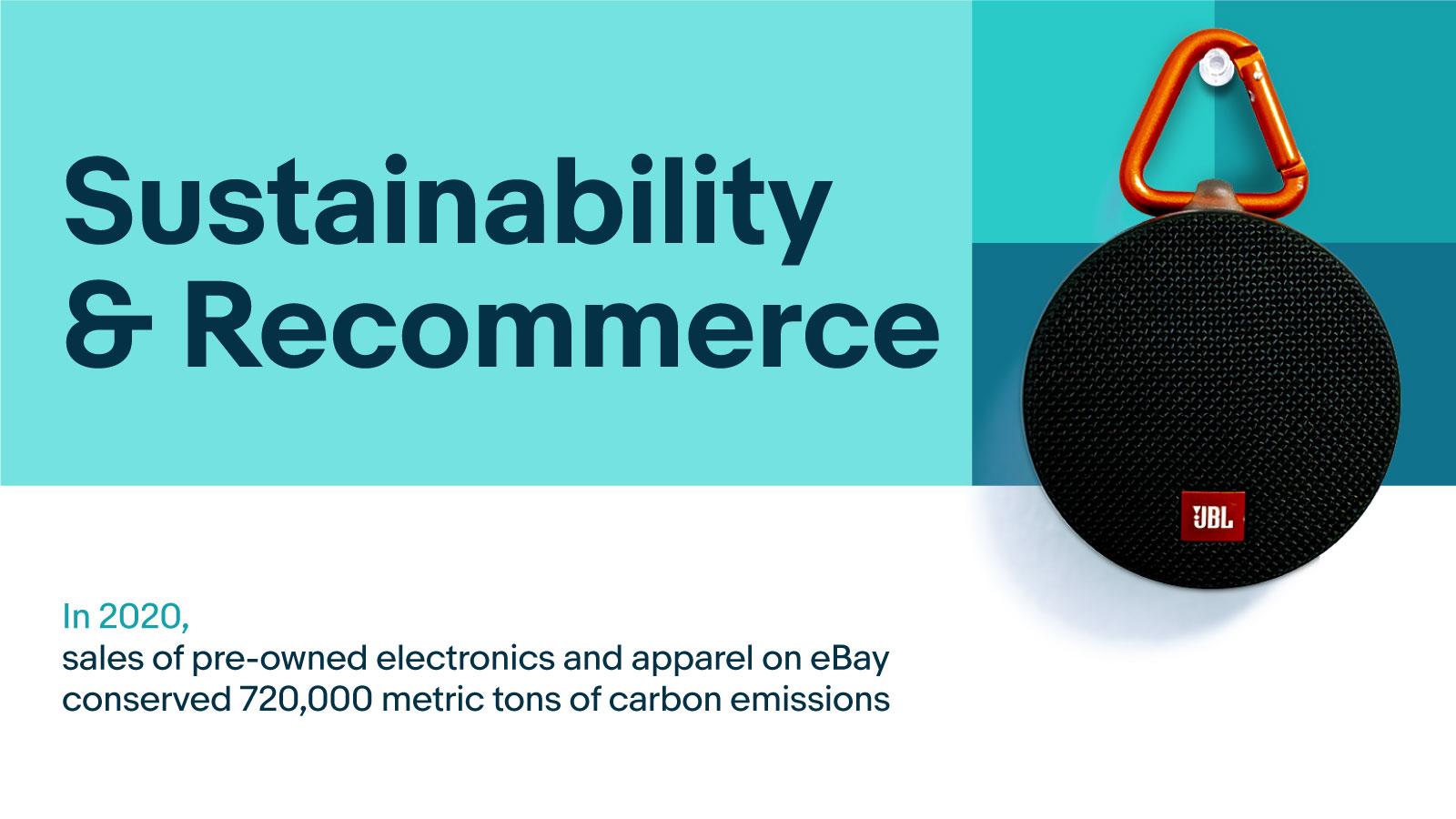Climate change is a growing problem for everyone. While governments struggle to come up with a solution, businesses should take initiative to secure their future. If a business wants to have a reliable consumer base or customers for their products, they need a habitable planet that can support both. Companies should treat sustainability initiatives the same way they would any other serious investment in their future.
In this area, eBay leads by example. Since inception, their platform has supported the resale of used goods, conserving resources and diverting waste from landfills. In apparel and electronics alone, recommerce on eBay has conserved 720,000 metric tons of carbon emissions.
But eBay doesn’t limit itself to what its company does naturally. Using the United Nations’ Sustainable Development Goals as a guide, eBay has set ambitious targets for itself to reduce its carbon footprint while growing as a company. eBay’s data centers and offices are to be powered by 100% renewable energy by 2025. As of 2020, they were 74% of the way there. eBay has been able to invest in clean energy at this pace thanks to its partnerships with other companies. Just recently, eBay and McDonald’s joined hands in agreeing to purchase power from Lightsource bp, the largest solar project in Louisiana.
eBay has also vowed to reduce its Scope 1 and 2 emissions 90% by 2030, using 2019 as their baseline year. Scope 3 emissions, those caused by the company’s supply chain, are also to be brought down 20% in the same time period. These targets are ambitious, but eBay has proven they are manageable. When a business is committed to serving the future generations, taking steps to mitigate climate change is the natural choice. Sustainability may incur costs, but the cost of an unlivable planet would be far worse.


